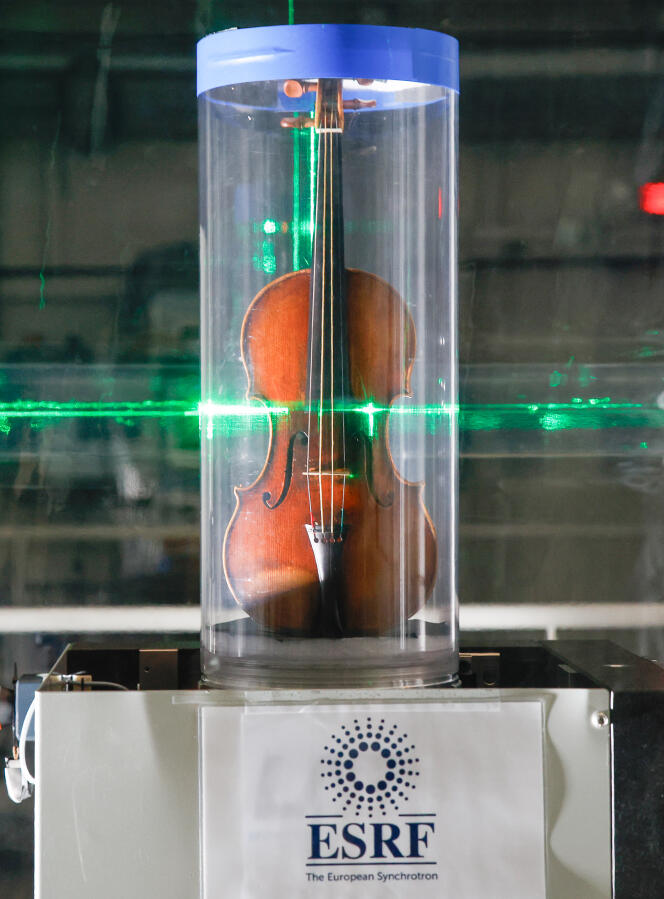
In three centuries he had never experienced such a first. Regular at festivals, partner of the greatest soloists, favorite violin of the virtuoso Niccolo Paganini (1782-1840), the illustrious “Il Cannone” has just enjoyed new success in France. Not by enchanting the audience with the grace of its powerful sound, but by playing one of these baroque programs designed by the scientists of the BM18 beamline of the European Synchrotron Radiation Facility (ESRF), in Grenoble. Comfortably installed against a foam padding, placed in a transparent tube on a turntable, protected by a temperature and humidity controlled enclosure, the masterpiece of violin making was presented on March 9 and 10 the subject of an experiment promised to make noise because it was so far removed from the classical canons. Its purpose, explains ESRF physicist Luigi Paolasini: “Evaluate the state of conservation of this historic piece using a non-destructive X-ray analysis technique, which would have been impossible elsewhere in the world. »
Made in 1743, in Cremona (Italy), by the luthier Bartolomeo Giuseppe Guarneri, known as “del Gesù”, creator of one hundred and fifty instruments as sought after as those of Antonio Stradivari by collectors willing to pay a few million euros, “Il Cannone” owes its reputation to Niccolo Paganini. “This famous Italian musician, through his innovations in playing, his mastery of techniques such as staccato and pizzicato, and his theatricality, helped introduce a dimension of virtuosity to the violin. says curator Bruce Carlson. He strongly influenced composers such as Schubert, Liszt, Brahms and Schumann. Even Beethoven had his success. Several of his most revolutionary works were developed on this violin, which he took with him everywhere and to which he nicknamed “Il Cannone” (“the cannon”) because of its power and its extraordinary sonority, Mr. Carlson continues.
Bequeathed to the city of Genoa (Italy) and kept since 1851 in Palazzo Tursi, the seat of the municipality, this historical piece also has the peculiarity of having undergone few changes. “Unlike all other Guarneri instruments, it has retained its original neck. The latter was expanded at the part that connected it to the body, as happened in the 18th century.e century to increase playability, but it was not replaced, the curator underlines. ‘Il Cannone’ has come to us in the condition it was in when Paganini died in 1840. Served in a display case modeled on that of The Mona Lisathe iconic relic only exceptionally participates in concerts. The honor of playing it is a privilege reserved for the winner of the Premio Paganini, the international violin competition, where the master’s most difficult compositions, such as his feared “24 Capricci”, are presented every two years in Genoa. .
